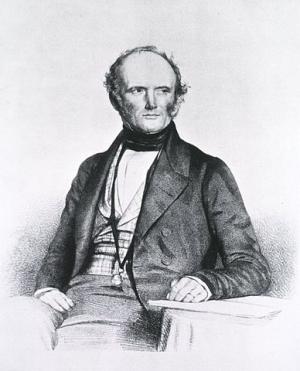
In “A Pseudo-Darwin Quotation,” I was discussing a spurious quotation that William Bell Riley seemed to have invented and misattributed to Darwin in his pamphlet Evolution—A False Philosophy, published sometime in the 1930s. Part of my interest stemmed from the fact that Riley imported the “why are there still monkeys?” challenge into the passage, although it was missing from the actual passage from Darwin that Riley was, more or less, paraphrasing. A persistent, widespread, and tiresomely familiar objection to evolution, the challenge “if humans evolved from monkeys, why are there still monkeys?” presupposes a misconception of evolution as exclusively consisting of change within a lineage, neglecting the possibility of a lineage’s splitting, resulting in two divergent lineages—such as those eventuating in today’s monkeys and today’s humans, not to put too fine a point on it.
The “why are there still monkeys?” challenge is discussed, e.g., by NCSE’s Eric Meikle and Eugenie C. Scott in “Why Are There Still Monkeys?” in Evolution: Education and Outreach in 2010, by NCSE’s Stephanie Keep in “Let’s Stop Monkeying About, Shall We?” in 2014, and no doubt by long-suffering science teachers in classrooms across the country right now in 2016. But clearly it is older by far. I previously remarked, “By the way, it’s worth asking when the ‘why there are still monkeys?’ challenge first emerged, but it’s hard to answer the question—there are lots of ways to express the same basic thought, after all,” and provided evidence that as far back as 1907 the challenge was regarded as shopworn. W. P. Ball described it as “extremely superficial, but by no means uncommon.” Unsurprisingly, it turns out to be older than that.
Returning to the question recently, it didn’t take me long at all to find the challenge surfacing earlier—when, in fact, the twenty-three-year-old Darwin was circumnavigating the globe on board HMS Beagle. In the second volume of his Principles of Geology (1832), Charles Lyell (above, 1797–1875), criticizing Lamarck, asks:
Why have the majority of existing creatures remained stationary throughout this long succession of epochs, while others have made such prodigious advances? Why are there such multitudes of infusoria and polyps, or of confervae and other cryptogamic plants? Why, moreover, has the process of development acted with such unequal and irregular force on those classes of beings which have been greatly perfected, so that there are wide chasms in the series; gaps so enormous, that Lamarck fairly admits we can never expect to fill them up by future discoveries?
Monkeys are not explicitly mentioned here, true, but the form of the argument is the same—“Why are there still infusoria, polyps, confervae, cryptogams?”—and the very next topic Lyell addresses is Lamarck’s theory of the transformation of the “Orang-Outang” into the human species.
Lyell probably wasn’t the first person to issue such a challenge, for Lamarck’s theory of evolution already possesses resources to answer it. (I am not, however, going to try researching the eighteenth-century French biological literature to find even earlier versions of the challenge, since my French is, malheureusement, meager.) Indeed, unlike today’s creationists, Lyell explicitly acknowledges the possibility of a response. Evolution chez Lamarck proceeds, Lyell explains:
by the slow but unceasing agency of two influential principles: first, the tendency to progressive advancement in organization, accompanied by greater dignity in instinct, intelligence, &c.; secondly, the force of external circumstances, or of variations in the physical condition of the earth, or the mutual relations of plants and animals. (emphasis in original)
If only progressive advancement operated, then perhaps it would be mysterious why there are still monkeys. (Although even then, it would be possible for the ancestors of monkeys not to be as old as the ancestors of humans, so there would be less time available for monkeys to evolve.) But external circumstances play a role in evolution, too, so “the progress of some races [is] retarded by unfavourable, and that of others accelerated by favourable, combinations of circumstances.”
Interestingly, immediately after presenting Lamarck’s answer to the challenge, Lyell proceeds to sketch human evolution along Lamarckian lines: a species of arboreal primate leaves the trees (owing to “circumstances … concerning the exact nature of which tradition is unfortunately silent”), becomes increasingly adapted to bipedality, and then drives competitor species out of its favored ecological niche (“all those spots … which best suited them”). Both the tendency to progressive advancement and the force of external circumstances are explicitly invoked. But Lyell ends with a not very subtle expression of skepticism: “the above sketch of the Lamarckian theory is no exaggerated picture, and those passages which have probably excited the greatest surprise in the mind of the reader are literal translations from the original.”
Lyell was arguably slow to accept evolution, and he was unenthusiastic about human evolution to the end of his days. These attitudes were, in his own view, connected: in 1827, after reading Lamarck, he wrote to Gideon Mantell that Lamarck’s theory, “if pushed as far as it must go, if worth anything, it would prove that men may have come from the Ourang-Outang” (a consequence unpacked in Principles of Geology). In June 1859, he wrote in his notebooks that “the chief objection to the hypothesis of transmutation was naturally the inseparable connexion which it established between Man & the lower animals.” But he was certainly not so uncritical as to have regarded the “why are there still monkeys?” challenge as a worthwhile challenge to the idea of evolution—unlike, for example, that luminary of our day, Rush Limbaugh.

